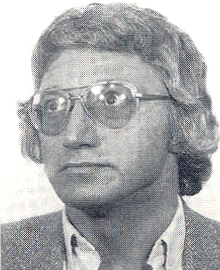First Glance
002
No architectural remains of Solomon’s Temple—destroyed by the Babylonians more than 2,500 years ago—have ever been recovered. But this has not discouraged archaeologists, historians, Bible scholars and artists who, for centuries, have attempted to reconstruct the tenth-century B.C. temple. Fortunately, 1 Kings 6–7 provides a careful description of the temple and of much of its lavish ornamentation. But the biblical text still leaves open many questions about the temple’s appearance. In pursuit of the answers, Victor Hurowitz culls information from ancient descriptions of temples and from archaeological remains of analogous Near Eastern temples, and takes us “Inside Solomon’s Temple.”

Hurowitz is a senior lecturer in the department of Bible and ancient Near Eastern studies at Ben Gurion University of the Negev, in Beer-Sheva. Previously, he taught Akkadian at the Hebrew University. Hurowitz is an aficionado of Jewish cantorial music and enjoys serving in his neighborhood synagogue as a cantor and Torah reader. Known among friends as the world’s last speaker of Akkadian, Hurowitz can be recognized by the cuneiform signs emblazoned on his skullcaps and bright red vest. He is the author of I Have Built You an Exalted House. Temple Building in the Bible in Light of Mesopotamian and Northwest Semitic Writings (JSOT/ASOR, 1992) and “When Did God Finish Creation?” BR 03:04.
Working miracles does not prove divinity, Jarl Fossum points out in “Understanding Jesus’ Miracles.” The Gospels themselves acknowledge that some of Jesus’ opponents could work miracles, so one must dig deeper for the meaning of Jesus’ miracles. Rationalistic attempts to explain such events also yield little insight. Instead, Fossum broadly surveys the miracle stories in their biblical context. He shows that they fall into two categories—healing miracles and nature miracles—that they sometimes allude to Old Testament events and that they generally serve some theological purpose.

Fossum holds a Doctor of Theology degree from the University of Utrecht, in the Netherlands. Since 1988 he has served as professor of New Testament studies at the University of Michigan, and since 1990 as professor of Gnostic studies at the C. G. Jung Institute in Zurich, Switzerland. His book on Jesus and the Gospels (written in collaboration with Phillip Munoa) will appear this year.
A great divide has split American Protestantism, pitting “evangelical” churches against “mainline” churches, parents against school boards, even factions within a single denomination against each other. About the only matter both sides can agree on is the cause of such deep division: whether or not to believe in inerrant Scripture and take a literal approach to the Bible. In “Literalism vs. Everything Else,” Martin E. Marty traces the roots of the debate back through the 19th century to the very founding of America. Will the heat and rancor of the conflict dissipate? Not likely, says Marty.

Marty is the Fairfax M. Cone Distinguished Service Professor of the History of Modern Christianity at the University of Chicago. He serves as senior editor of the weekly The Christian Century and as co-editor of the quarterly Church History. Among the most recent of his 40 books are Fundamentalisms Observed (Univ. of Chicago, 1991), Fundamentalisms and Society and (co-authored by R. Scott Appleby) Fundamentalisms and the State (both Univ. of Chicago, 1993). He won the National Book Award in 1972 for Righteous Empire. The holder of 45 honorary degrees, Marty preceded his academic career with ten years in the Lutheran pastorate.
A Note on Style
B.C.E. (Before the Common Era) and C.E. (Common Era), used by some of our authors and often used in scholarly literature, are the alternative designations corresponding to B.C. and A.D.
No architectural remains of Solomon’s Temple—destroyed by the Babylonians more than 2,500 years ago—have ever been recovered. But this has not discouraged archaeologists, historians, Bible scholars and artists who, for centuries, have attempted to reconstruct the tenth-century B.C. temple. Fortunately, 1 Kings 6–7 provides a careful description of the temple and of much of its lavish ornamentation. But the biblical text still leaves open many questions about the temple’s appearance. In pursuit of the answers, Victor Hurowitz culls information from ancient descriptions of temples and from archaeological remains of analogous Near Eastern temples, and takes us “Inside Solomon’s Temple.” […]
You have already read your free article for this month. Please join the BAS Library or become an All Access member of BAS to gain full access to this article and so much more.
